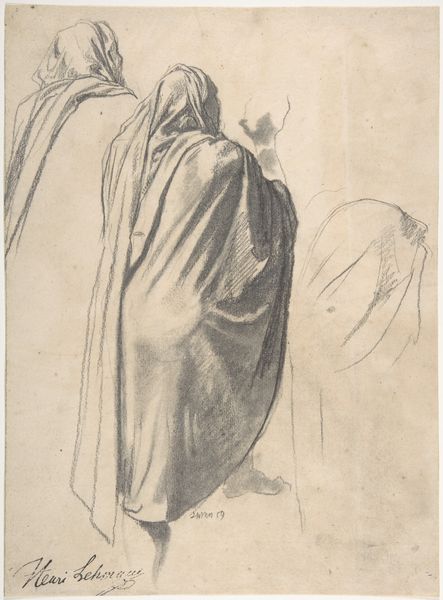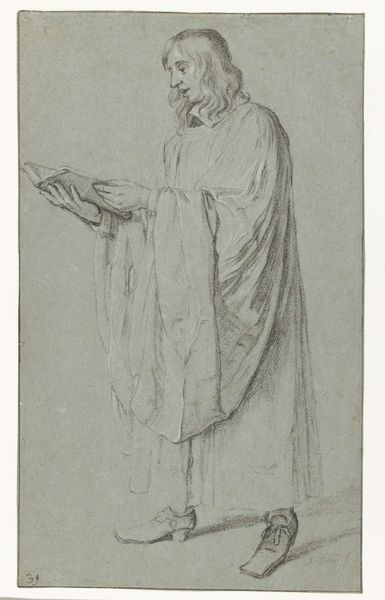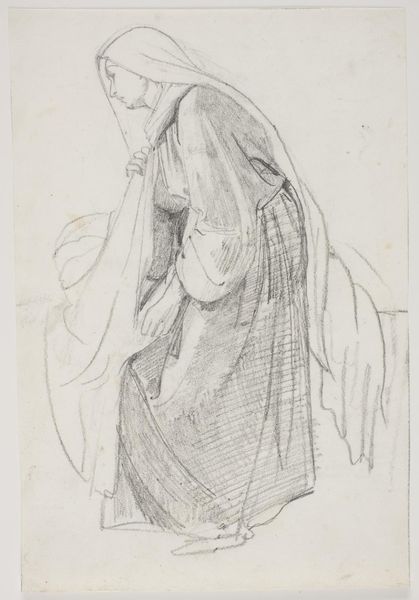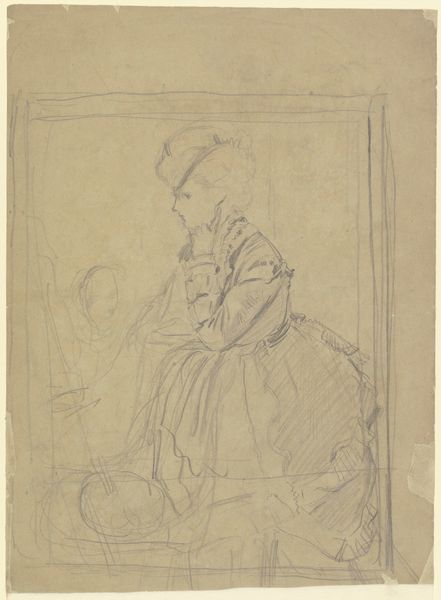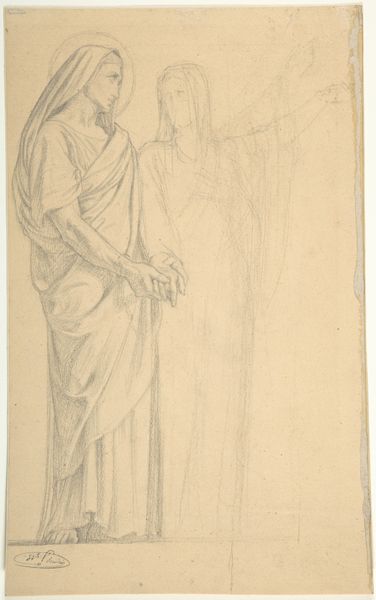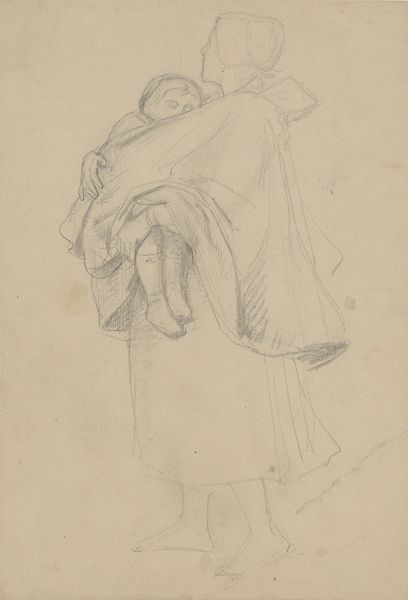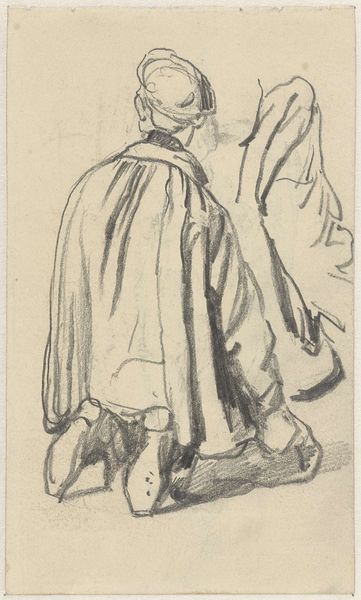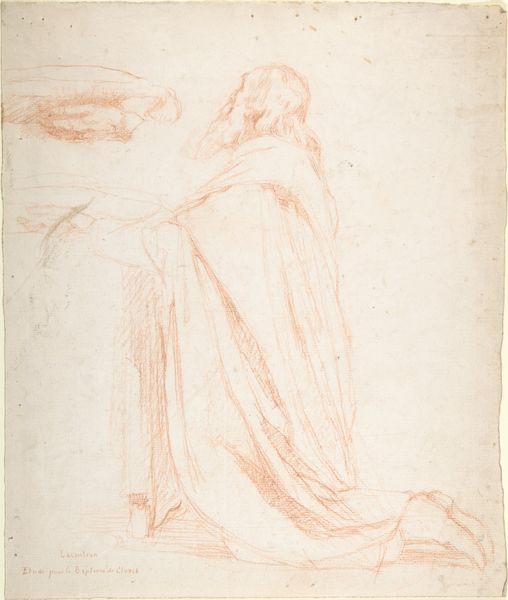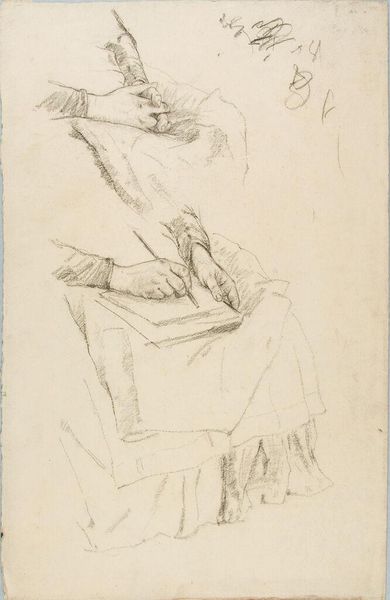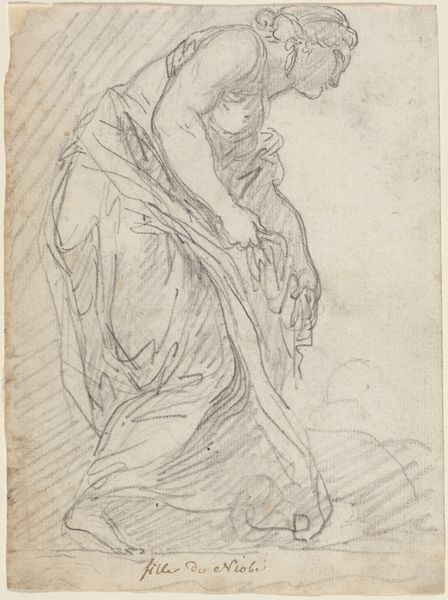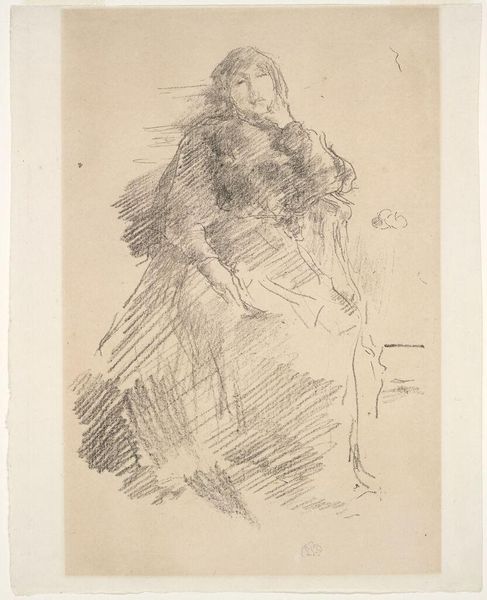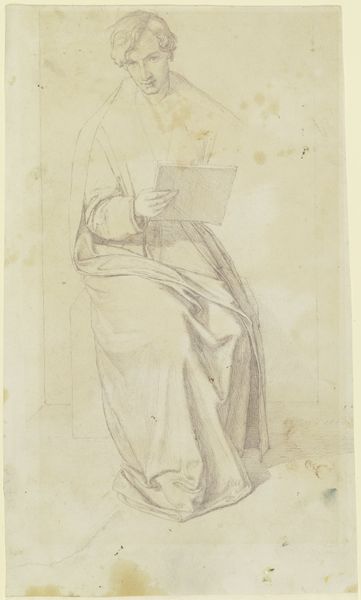
drawing, pencil
#
portrait
#
drawing
#
pencil sketch
#
figuration
#
pencil
Dimensions: height 223 mm, width 139 mm
Copyright: Rijks Museum: Open Domain
Curator: This pencil sketch by Antoon Derkinderen, aptly titled "Kneeling Man," pulls us into a world of quiet contemplation, wouldn’t you say? Created sometime between 1869 and 1925. Editor: Absolutely. My immediate feeling is one of somber reflection. There’s almost a vulnerability radiating from the figure's posture. I wonder about the circumstances surrounding this depiction; the man seems burdened, almost defeated. Curator: The simplicity of the pencil on paper definitely adds to that sense of vulnerability. You see every stroke, every hesitation. I feel a yearning in it. A search, perhaps, for meaning. He looks almost monastic. Editor: Exactly. And thinking about that period, between 1869 and 1925, Europe was wrestling with immense societal shifts, the rise of industrialism, questioning traditional structures. Is this an expression, maybe, of the individual soul grappling with modernity’s disenchantment? The male form has such deep rooted historical representations in classical works, but here the tone feels like something else completely, almost fragile? Curator: Oh, I agree. The weight of the cape-like garment seems symbolic, pressing him down, almost like societal expectations he's trying to bear. He's grounded by the act of kneeling, and it adds a certain tension. Is he surrendering or finding strength? I think we want to see his face so badly. Editor: Yes, the facelessness invites us to project. What’s fascinating is that Derkinderen himself, steeped in the Symbolist movement, sought spiritual depth through his art. It wasn't simply about what you saw on the surface but something about internal feeling. The human cost. It becomes about power dynamics and positions within a patriarchal structure perhaps? What would this symbolise today? Curator: It really allows room to explore the quiet moments when societal structures impact someone on an extremely personal level. And to your point on the power dynamics of that specific era. Is that figure rising, being silenced, empowered? It’s really the artist giving that opportunity of self-reflection. Editor: It really is the intersectionality of so many possible meanings within such simplicity of execution that create layers. I do wonder, where would Derkinderen imagine this man, at that time in history, ended up in our contemporary understanding of gender and political position? What choices would have been open to him then versus today? Curator: And what does kneeling mean to people today, both literally and symbolically? Editor: Yes, so much to unpack in a single drawing... and now so many questions raised to think about afterwards too!
Comments
No comments
Be the first to comment and join the conversation on the ultimate creative platform.
